示例:
<LinearLayout xmlns:android="http://schemas.android.com/apk/res/android" android:layout_width="match_parent" android:layout_height="match_parent" android:orientation="vertical"> <TextView android:id="@+id/tv_hello" android:layout_width="wrap_content" android:layout_height="wrap_content" android:text="你好,世界" android:textSize="50dp" android:textColor="#00ff00" android:background="@color/black"/> </LinearLayout>
<TextView
android:id="@+id/tv_hello"
android:layout_width="wrap_content"
android:layout_height="wrap_content"
android:text="你好,世界" -------设置文本内容
android:textSize="50dp" -----设置字体大小
android:textColor="#00ff00" --------设置字体颜色
android:background="@color/black"/> ------设置文本框背景颜色
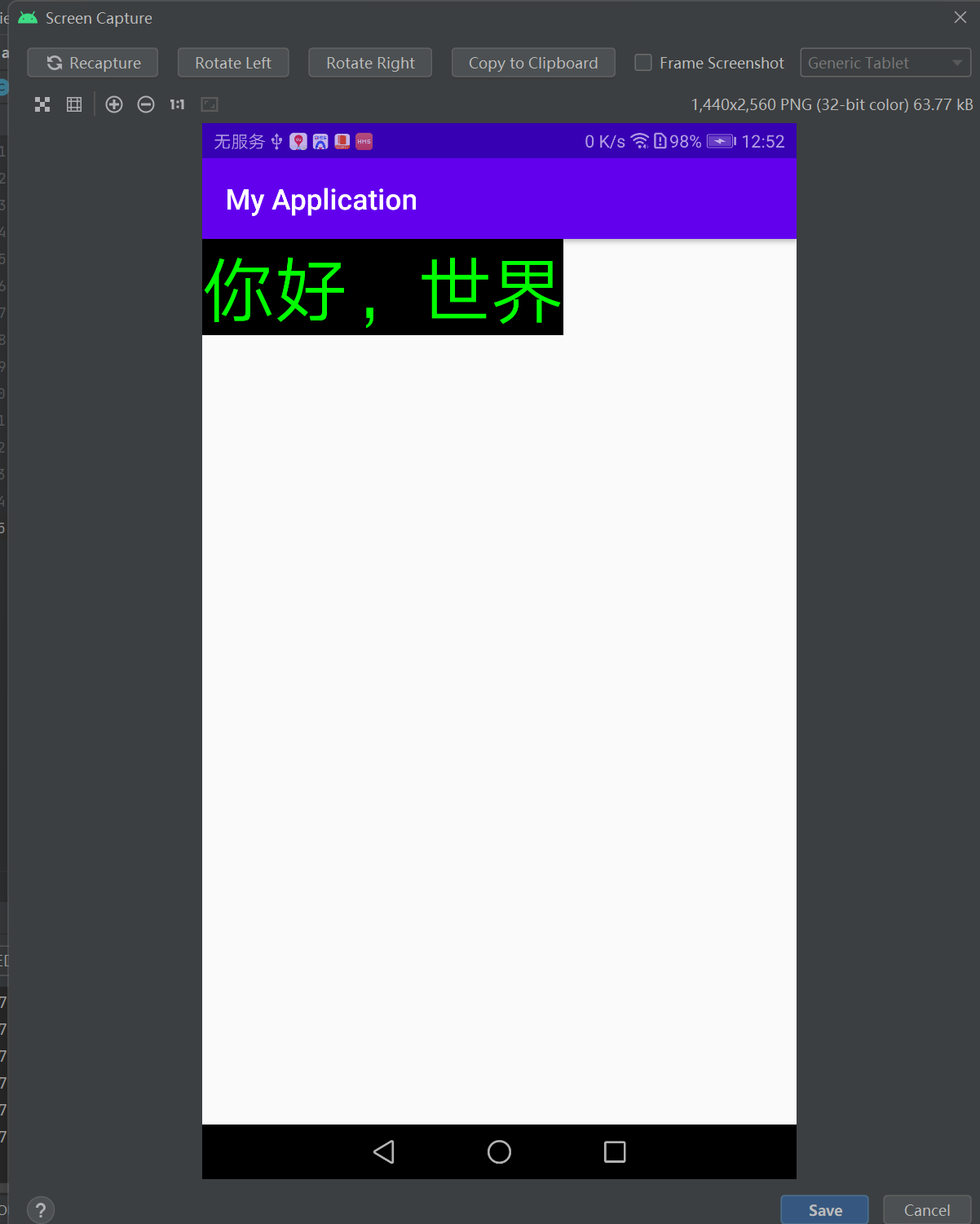
====================================================================


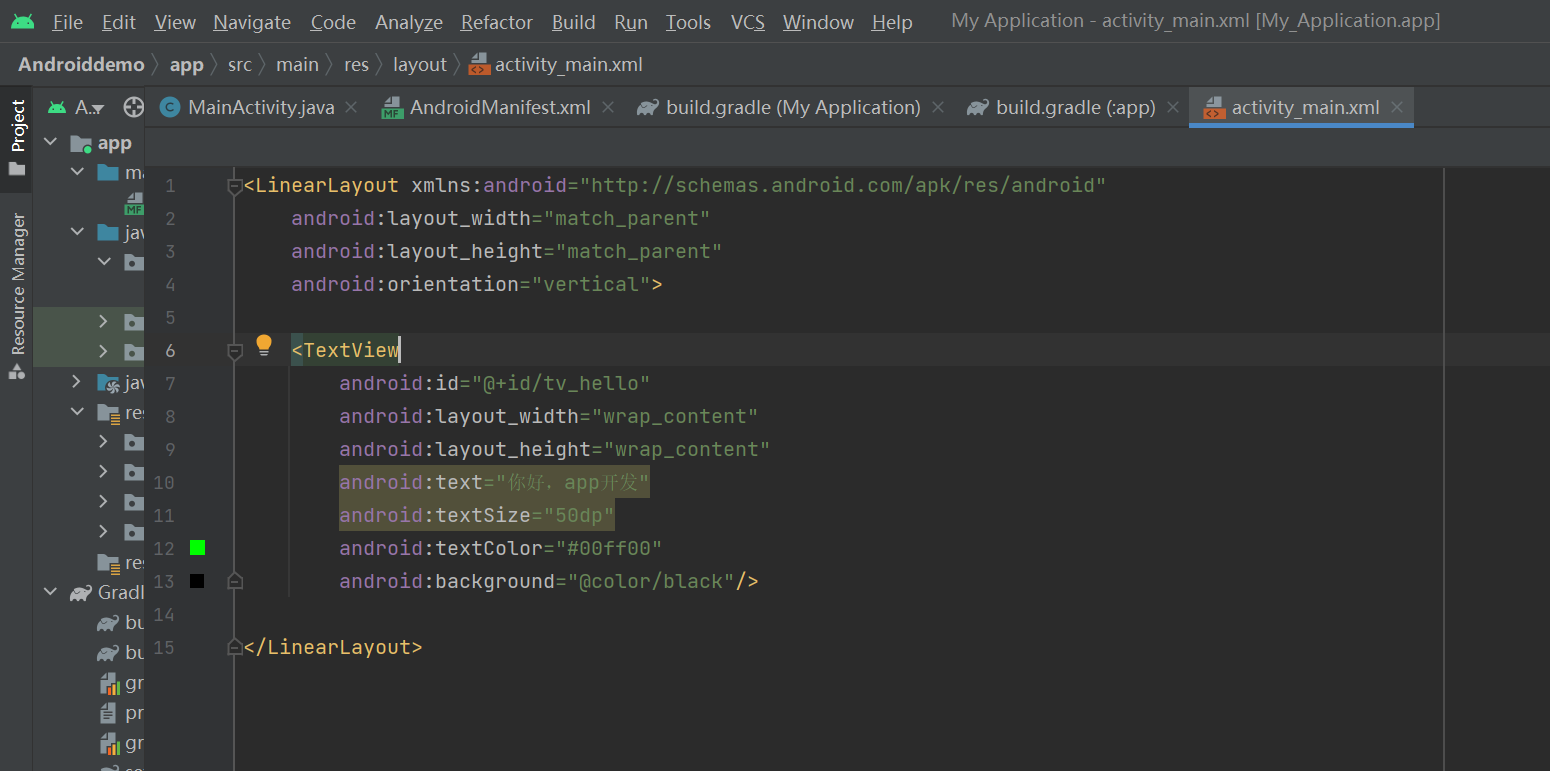
TextView tv_hello = findViewById(R.id.tv_hello);
tv_hello.setText("你好,世界"); // 设置tv_hello的文字内容


====================================================================================




<LinearLayout xmlns:android="http://schemas.android.com/apk/res/android" android:layout_width="match_parent" android:layout_height="match_parent" android:orientation="vertical"> <TextView android:id="@+id/tv_hello" android:layout_width="wrap_content" android:layout_height="wrap_content" android:text="@string/hello" android:textSize="50dp" android:textColor="#00ff00" android:background="@color/black"/> </LinearLayout>
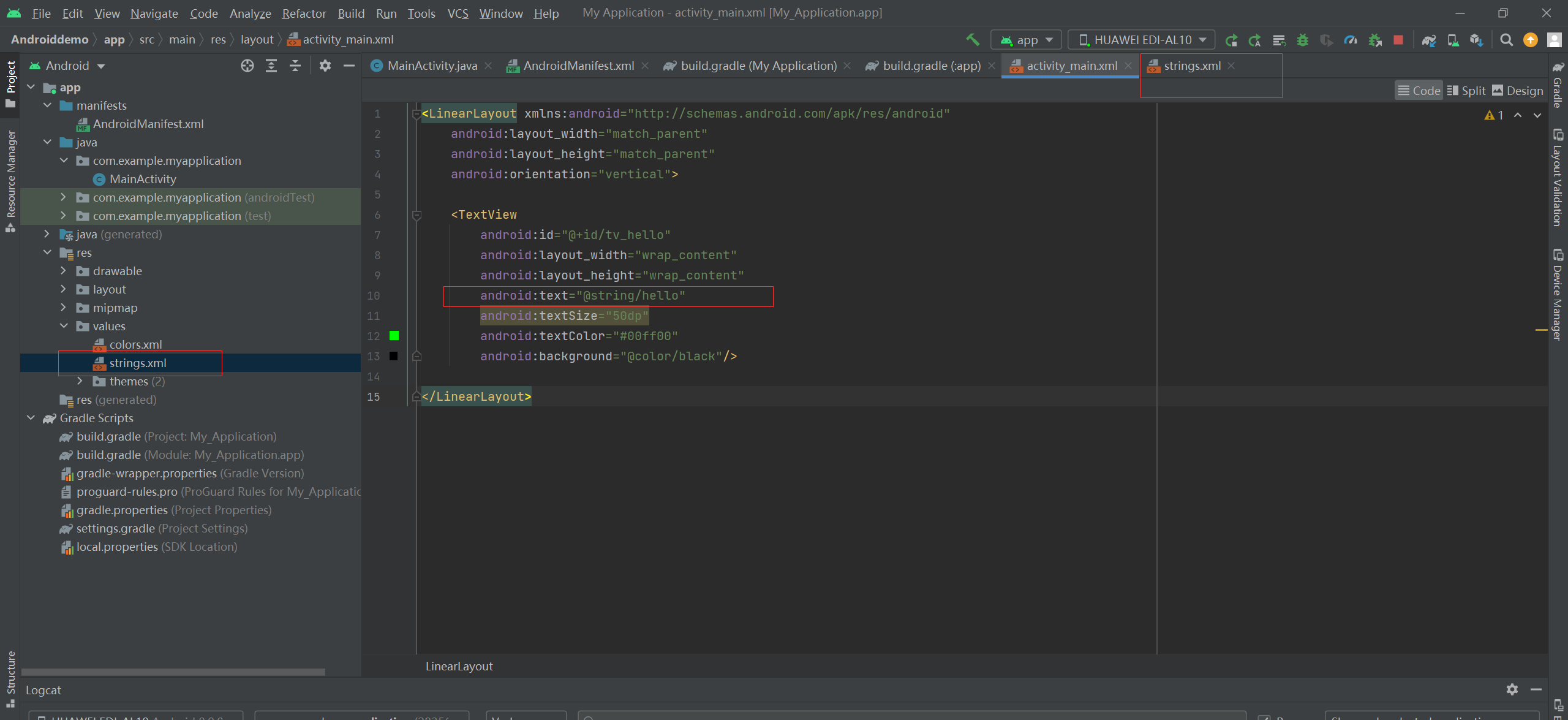
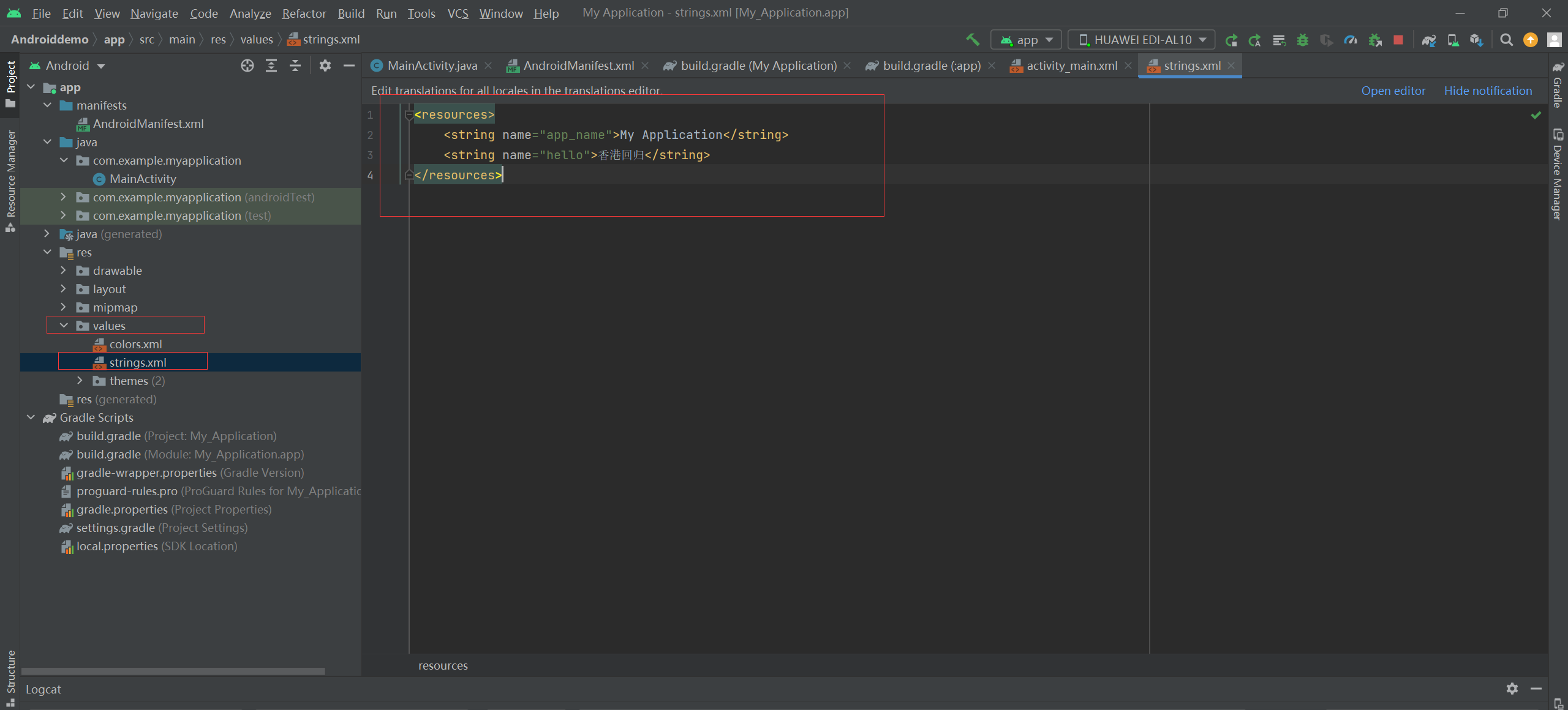
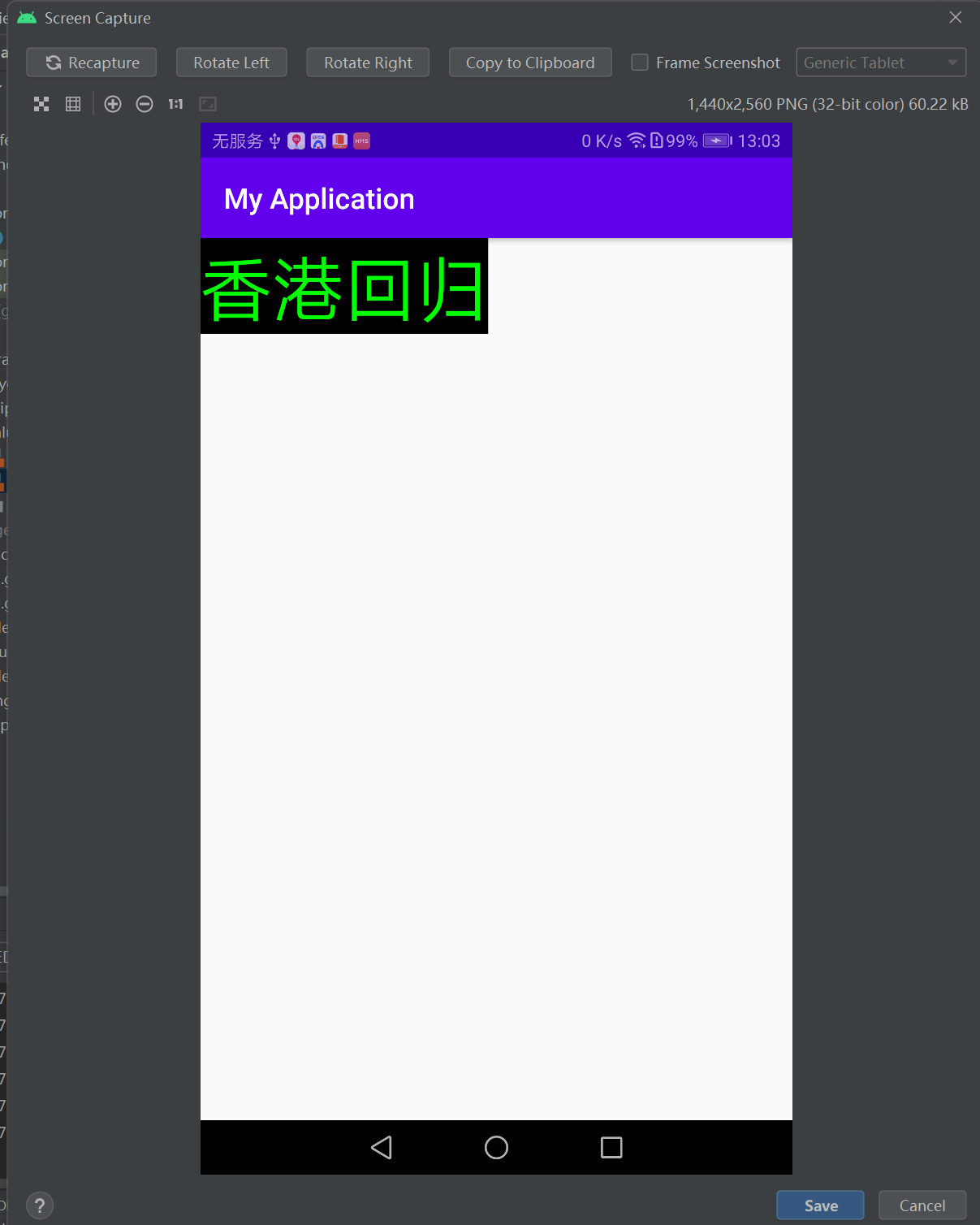
------------------------------------------------------------------------------------------------------------
package com.example.myapplication; import android.support.v7.app.AppCompatActivity; import android.os.Bundle; import android.view.View; import android.widget.TextView; public class MainActivity extends AppCompatActivity { @Override protected void onCreate(Bundle savedInstanceState) { super.onCreate(savedInstanceState); setContentView(R.layout.activity_main); // 获取名叫tv_hello的文本视图 TextView tv_hello = findViewById(R.id.tv_hello); // tv_hello.setText("你好,世界"); // 设置tv_hello的文字内容 tv_hello.setText(R.string.hello); // 设置tv_hello的文字资源 } }
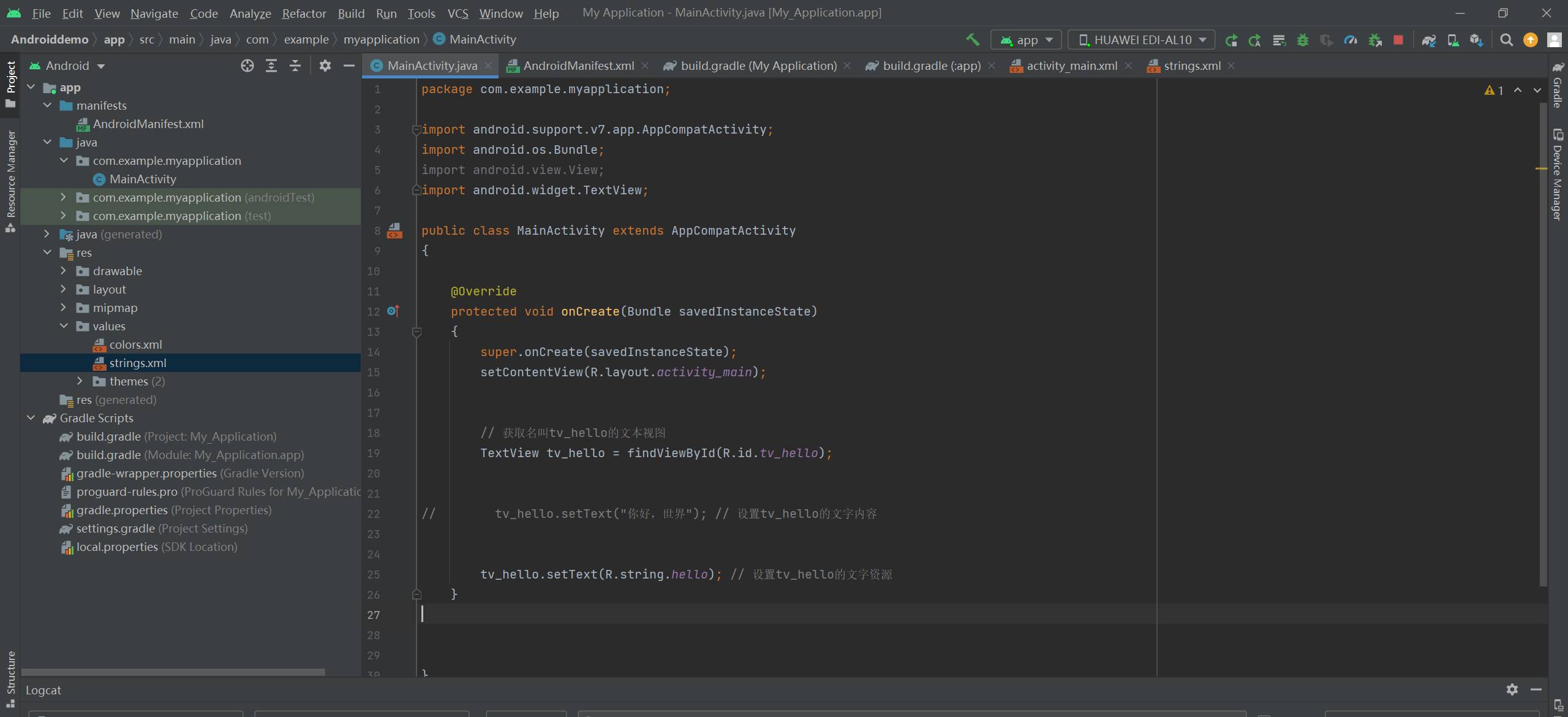
=======================================================================================


package com.example.myapplication; import android.support.v7.app.AppCompatActivity; import android.os.Bundle; import android.view.View; import android.widget.TextView; public class MainActivity extends AppCompatActivity { @Override protected void onCreate(Bundle savedInstanceState) { super.onCreate(savedInstanceState); setContentView(R.layout.activity_main); // 获取名叫tv_hello的文本视图 TextView tv_hello = findViewById(R.id.tv_hello); // tv_hello.setText("你好,世界"); // 设置tv_hello的文字内容 tv_hello.setText(R.string.hello); // 设置tv_hello的文字资源 tv_hello.setTextSize(100); } }
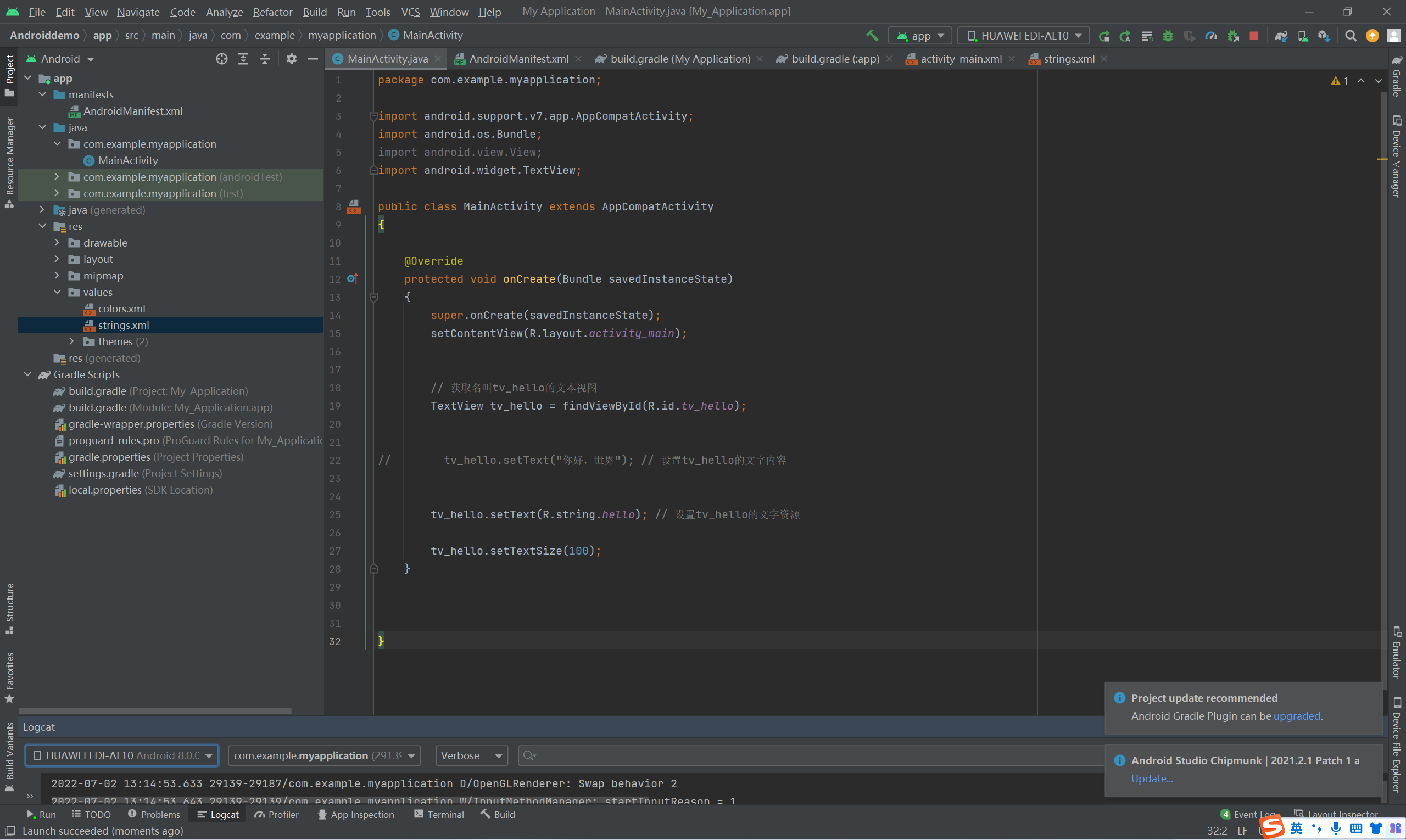
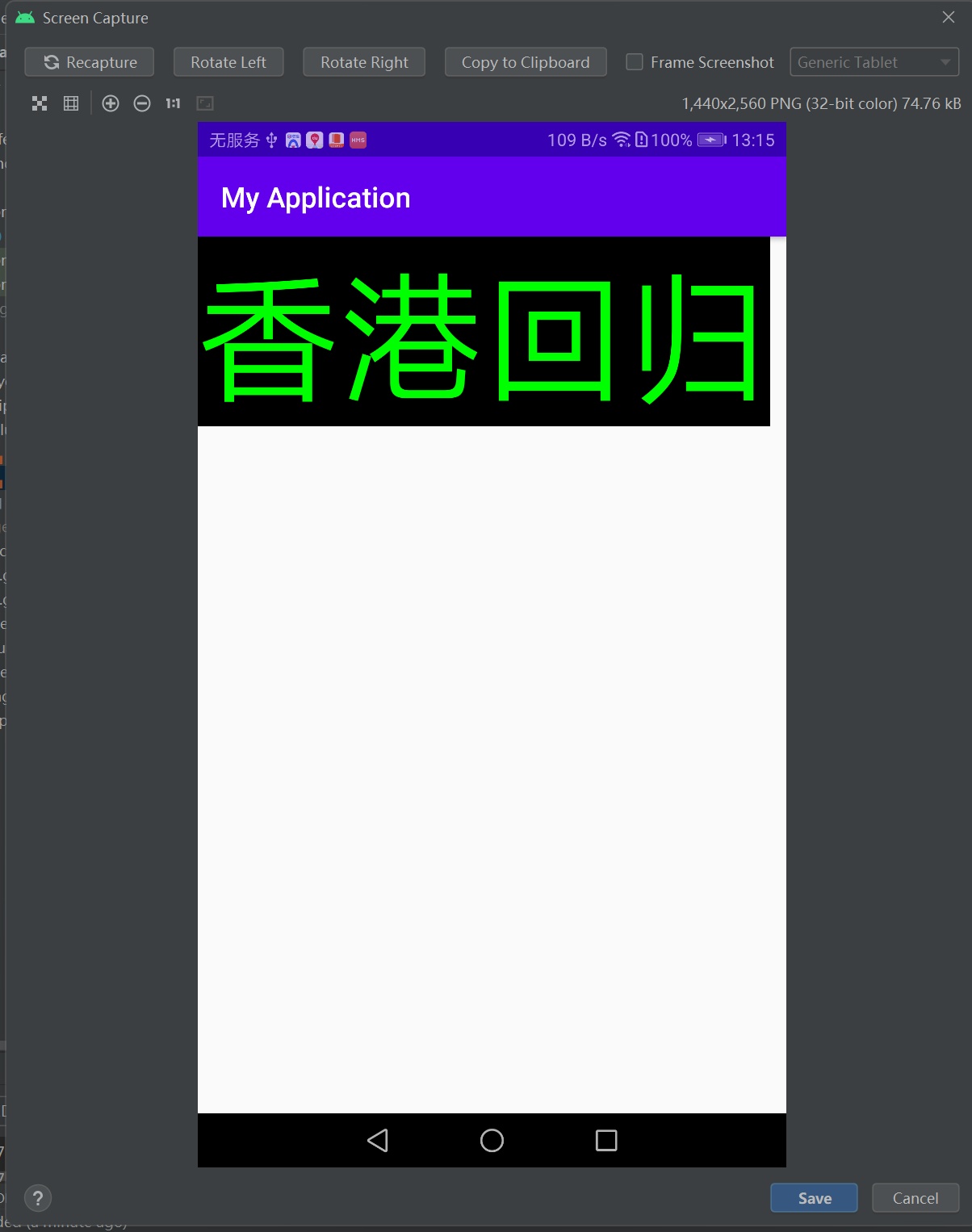
=============================================================================

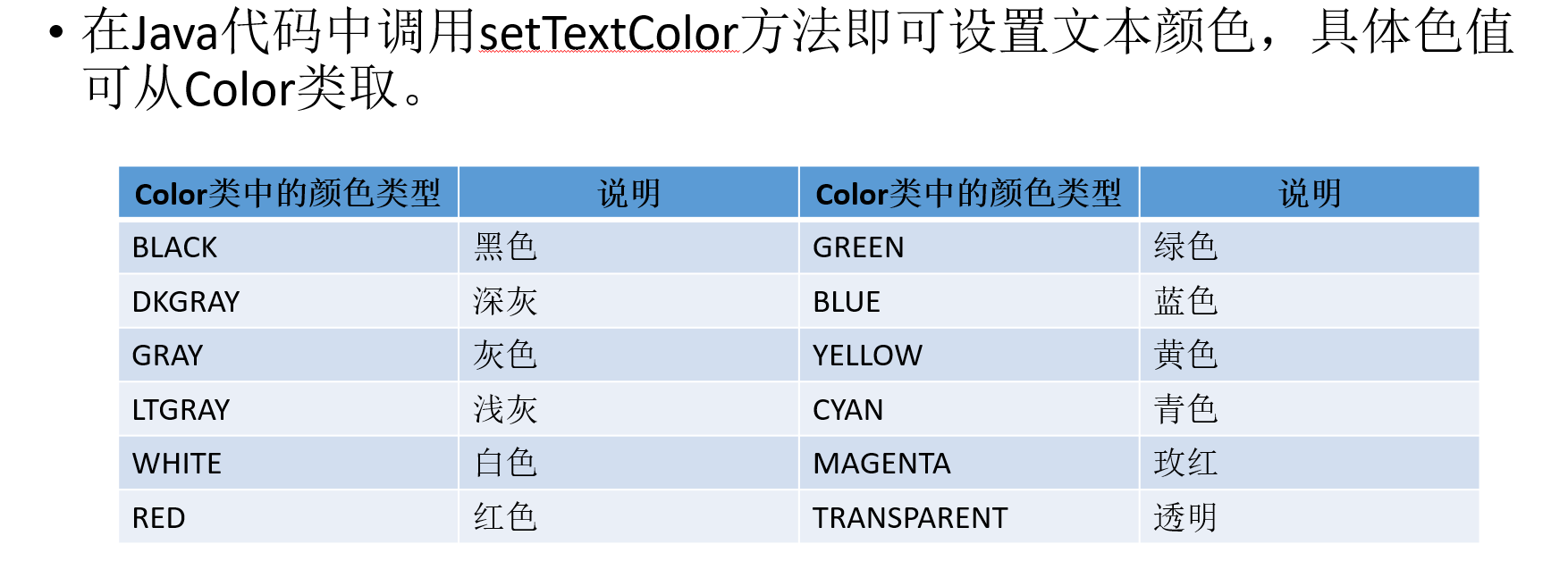






<LinearLayout xmlns:android="http://schemas.android.com/apk/res/android" android:layout_width="match_parent" android:layout_height="match_parent" android:orientation="vertical"> <TextView android:id="@+id/tv_hello" android:layout_width="wrap_content" android:layout_height="wrap_content" android:text="@string/hello" android:textSize="50dp" android:textColor="@color/as" android:background="@color/black"/> </LinearLayout>
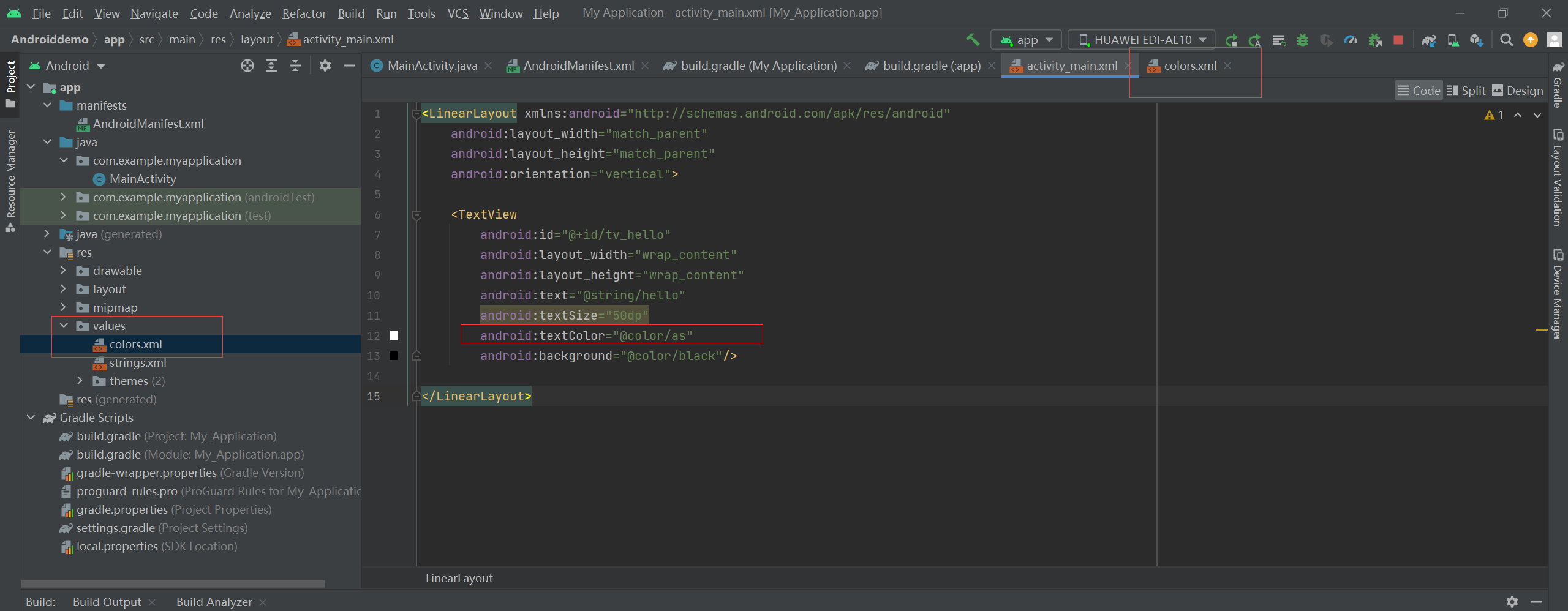
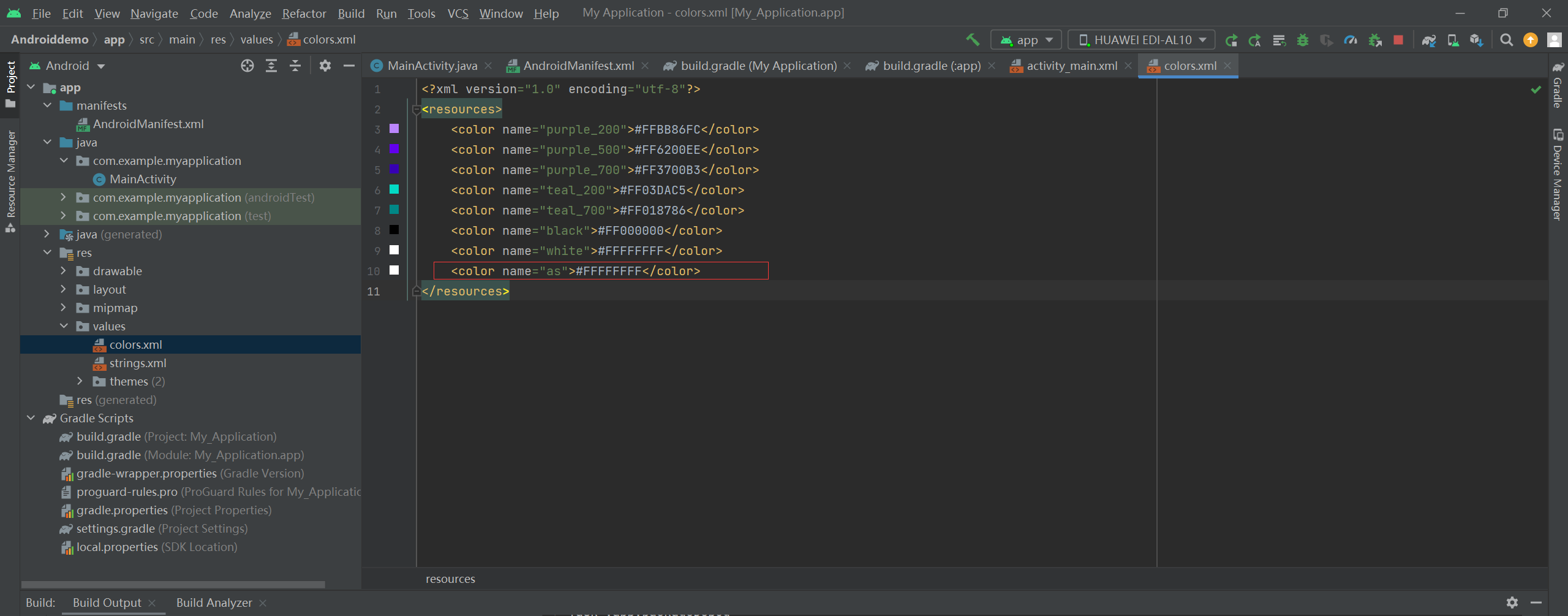
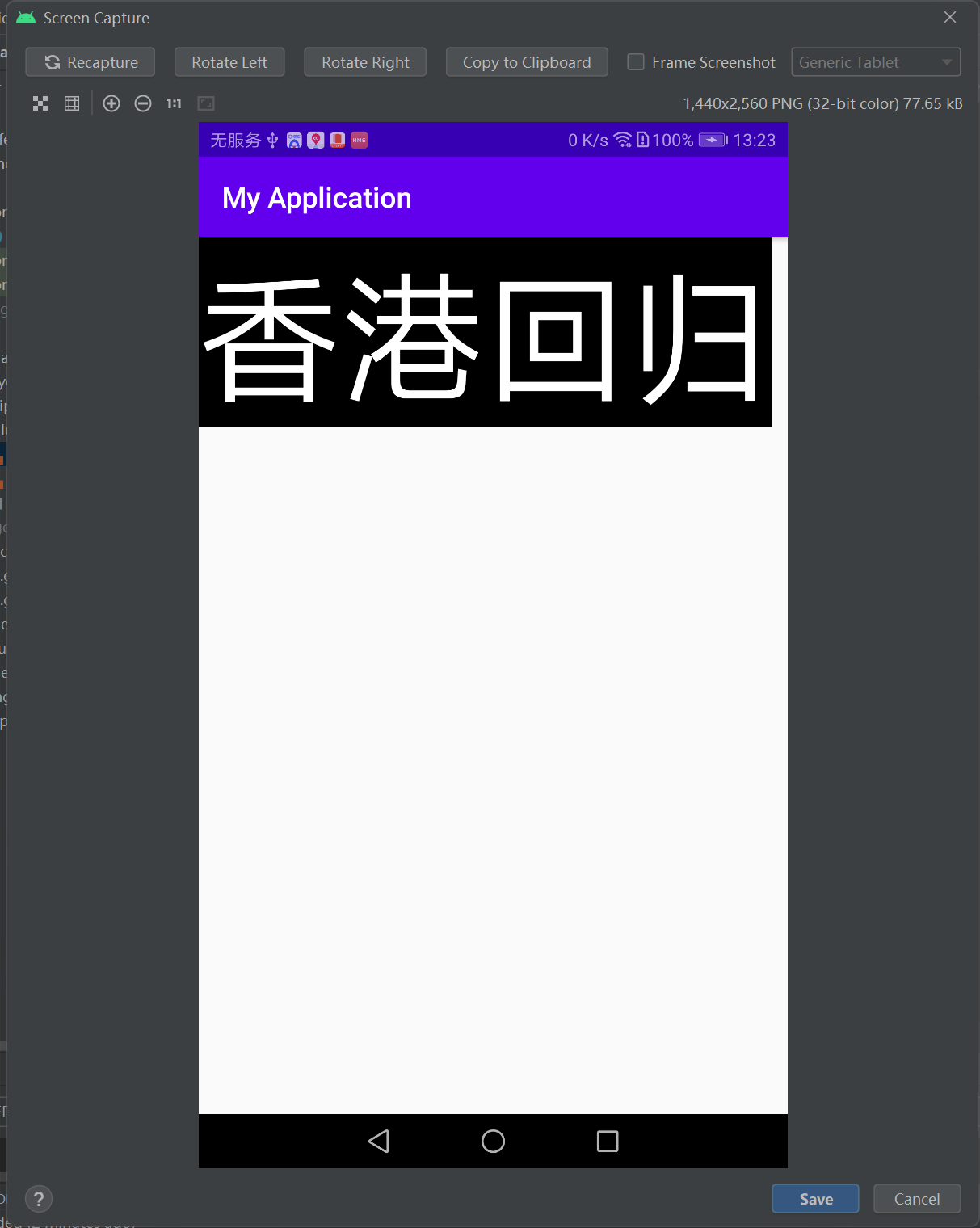
---------------------------------------------------------------------------------------------------------------------------------
package com.example.myapplication; import android.graphics.Color; import android.support.v7.app.AppCompatActivity; import android.os.Bundle; import android.view.View; import android.widget.TextView; public class MainActivity extends AppCompatActivity { @Override protected void onCreate(Bundle savedInstanceState) { super.onCreate(savedInstanceState); setContentView(R.layout.activity_main); // 获取名叫tv_hello的文本视图 TextView tv_hello = findViewById(R.id.tv_hello); // tv_hello.setText("你好,世界"); // 设置tv_hello的文字内容 tv_hello.setText(R.string.hello); // 设置tv_hello的文字资源 tv_hello.setTextSize(100); tv_hello.setTextColor(Color.LTGRAY); //设置字体颜色 tv_hello.setBackgroundColor(Color.GREEN); // 在代码中定义的色值 //设置背景颜色 } }
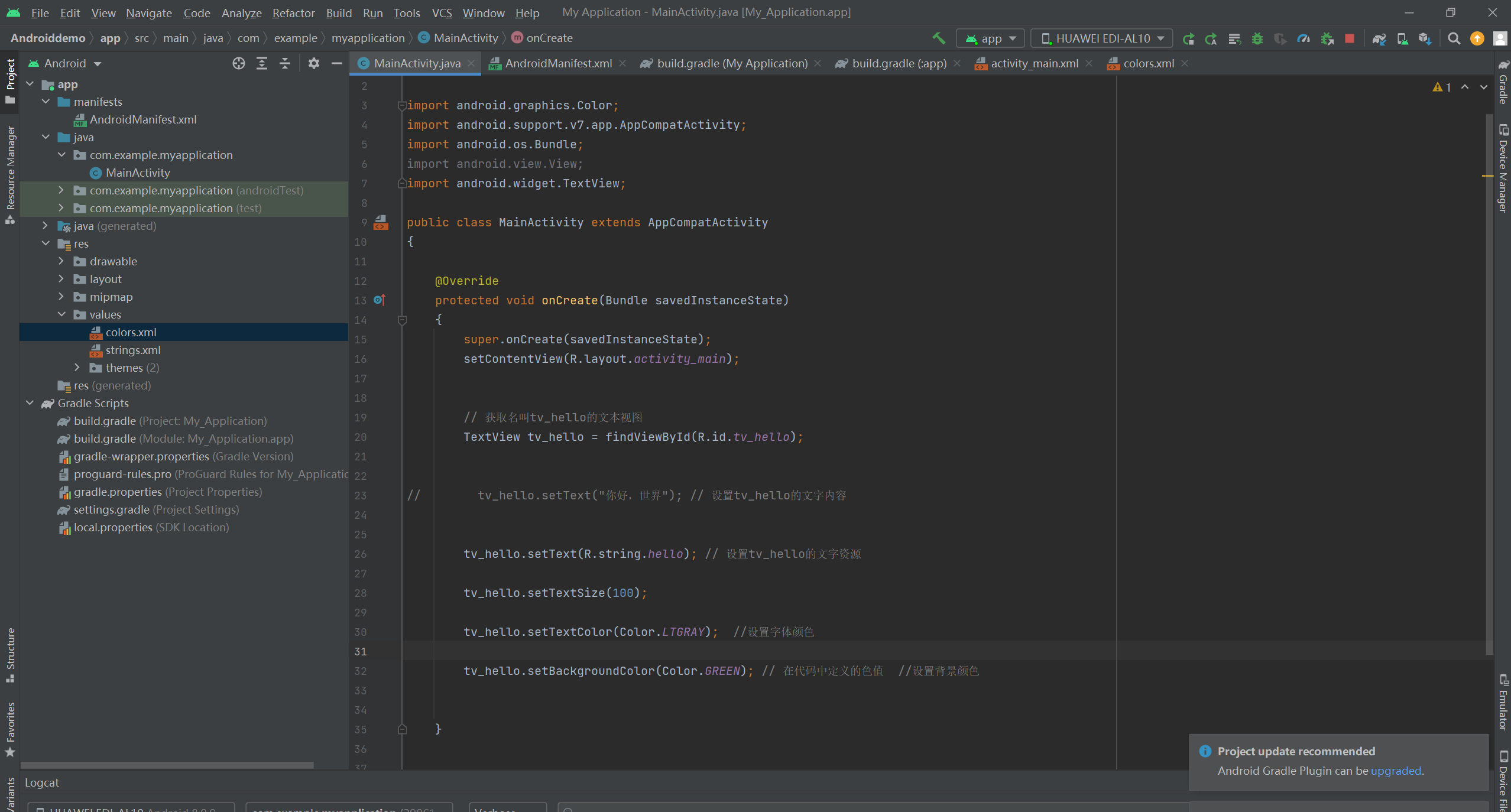
===========================================================================
PS:
package com.example.chapter03; import android.graphics.Color; import android.os.Bundle; import android.widget.TextView; import androidx.appcompat.app.AppCompatActivity; public class TextColorActivity extends AppCompatActivity { @Override protected void onCreate(Bundle savedInstanceState) { super.onCreate(savedInstanceState); setContentView(R.layout.activity_text_color); // 从布局文件中获取名叫tv_code_system的文本视图 TextView tv_code_system = findViewById(R.id.tv_code_system); // 将tv_code_system的文字颜色设置系统自带的绿色 tv_code_system.setTextColor(Color.GREEN); // 从布局文件中获取名叫tv_code_six的文本视图 TextView tv_code_six = findViewById(R.id.tv_code_six); // 将tv_code_six的文字颜色设置为透明的绿色,透明就是看不到 tv_code_six.setTextColor(0x00ff00); // 从布局文件中获取名叫tv_code_eight的文本视图 TextView tv_code_eight = findViewById(R.id.tv_code_eight); // 将tv_code_eight的文字颜色设置为不透明的绿色,即正常的绿色 tv_code_eight.setTextColor(0xff00ff00); // 从布局文件中获取名叫tv_code_background的文本视图 TextView tv_code_background = findViewById(R.id.tv_code_background); // 将tv_code_background的背景颜色设置为绿色 tv_code_background.setBackgroundColor(Color.GREEN); // 在代码中定义的色值 tv_code_background.setBackgroundResource(R.color.green); // 颜色来源于资源文件 } }
